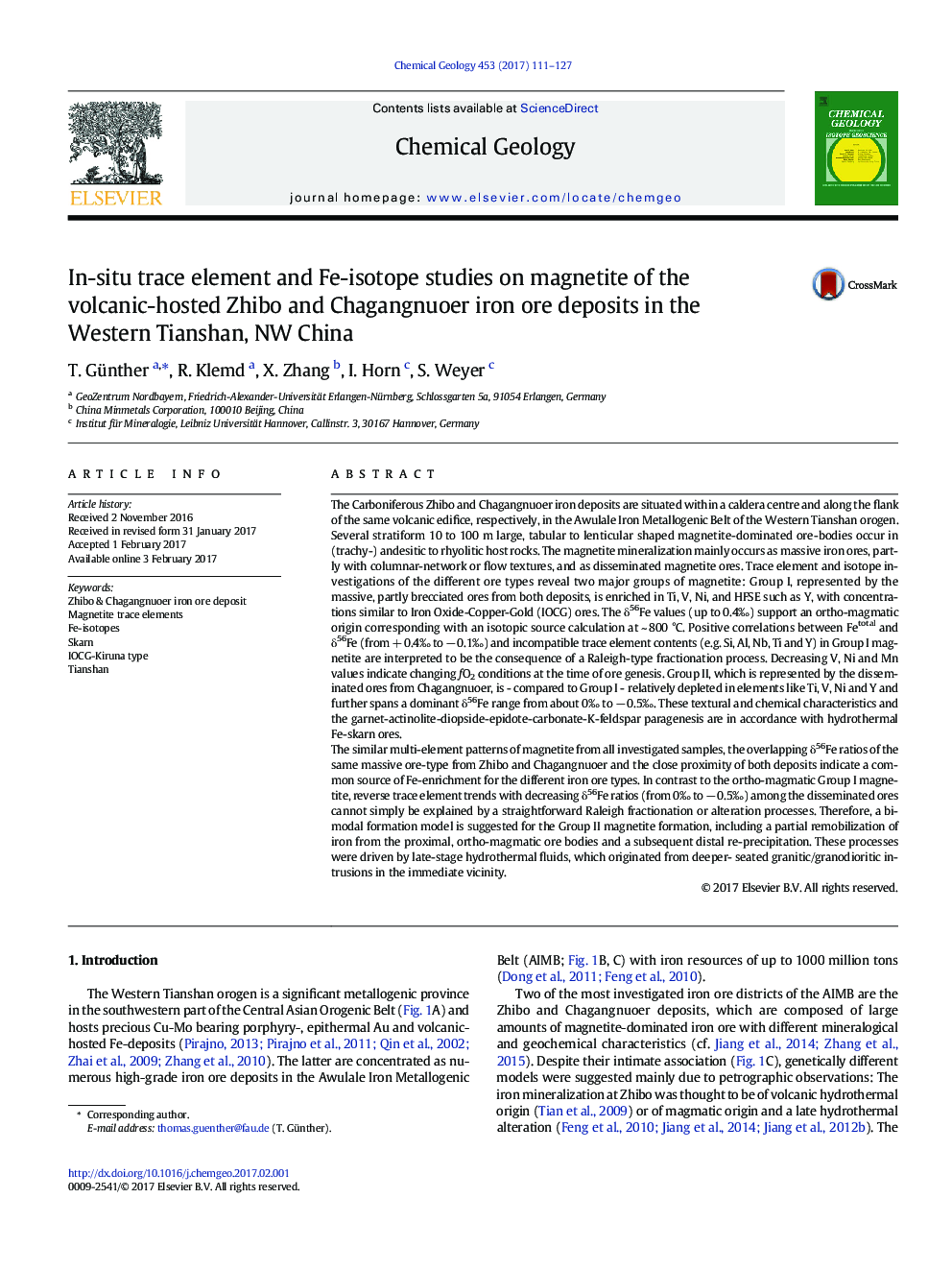| Article ID | Journal | Published Year | Pages | File Type |
|---|---|---|---|---|
| 5782915 | Chemical Geology | 2017 | 17 Pages |
Abstract
The similar multi-element patterns of magnetite from all investigated samples, the overlapping δ56Fe ratios of the same massive ore-type from Zhibo and Chagangnuoer and the close proximity of both deposits indicate a common source of Fe-enrichment for the different iron ore types. In contrast to the ortho-magmatic Group I magnetite, reverse trace element trends with decreasing δ56Fe ratios (from 0â° to â 0.5â°) among the disseminated ores cannot simply be explained by a straightforward Raleigh fractionation or alteration processes. Therefore, a bimodal formation model is suggested for the Group II magnetite formation, including a partial remobilization of iron from the proximal, ortho-magmatic ore bodies and a subsequent distal re-precipitation. These processes were driven by late-stage hydrothermal fluids, which originated from deeper- seated granitic/granodioritic intrusions in the immediate vicinity.
Related Topics
Physical Sciences and Engineering
Earth and Planetary Sciences
Geochemistry and Petrology
Authors
T. Günther, R. Klemd, X. Zhang, I. Horn, S. Weyer,
